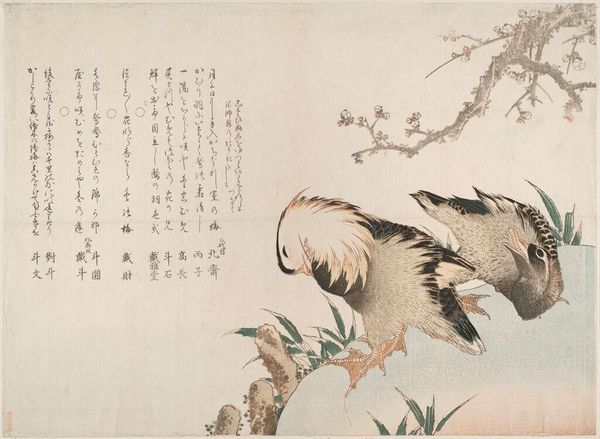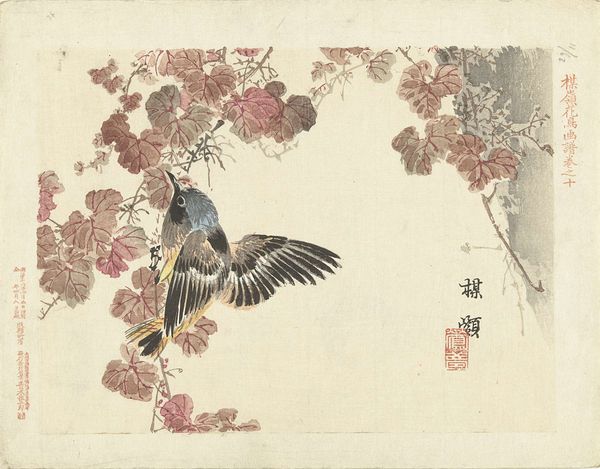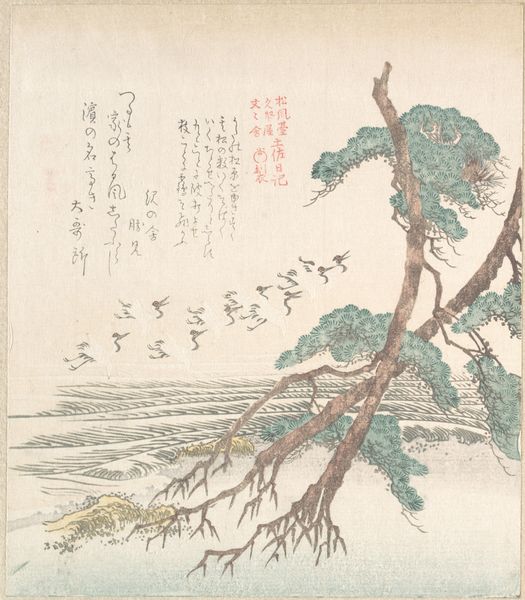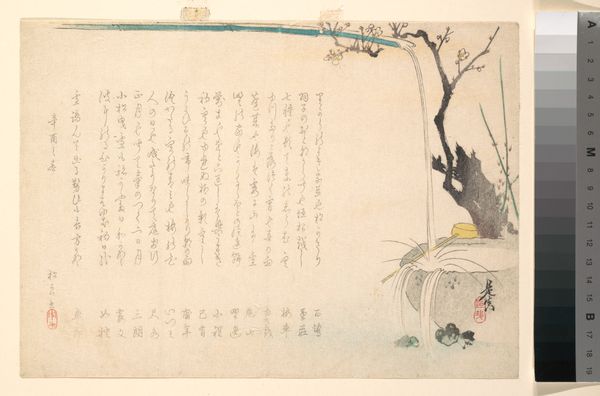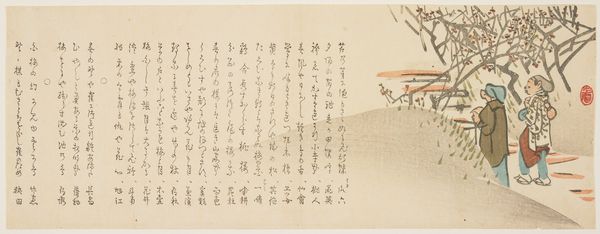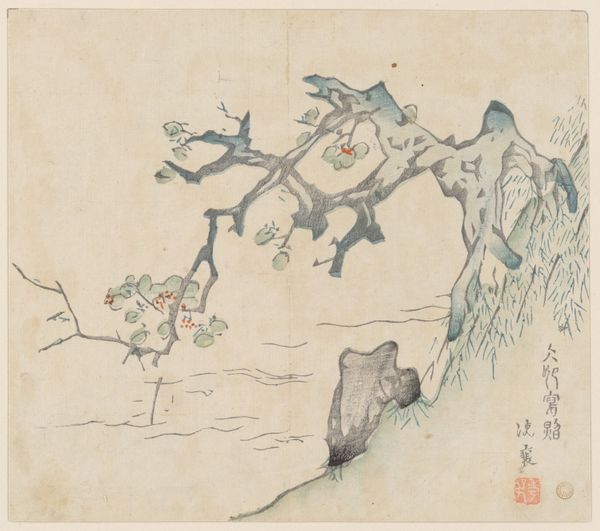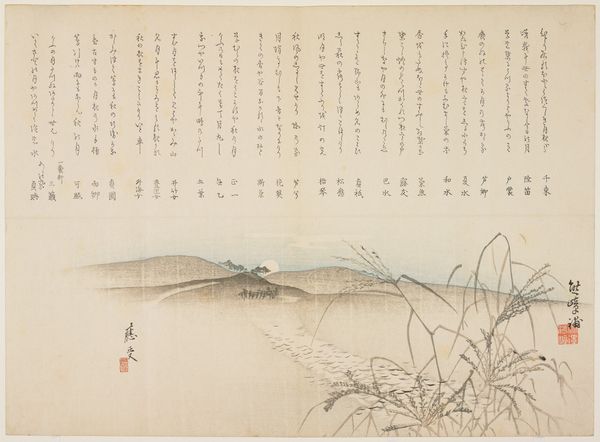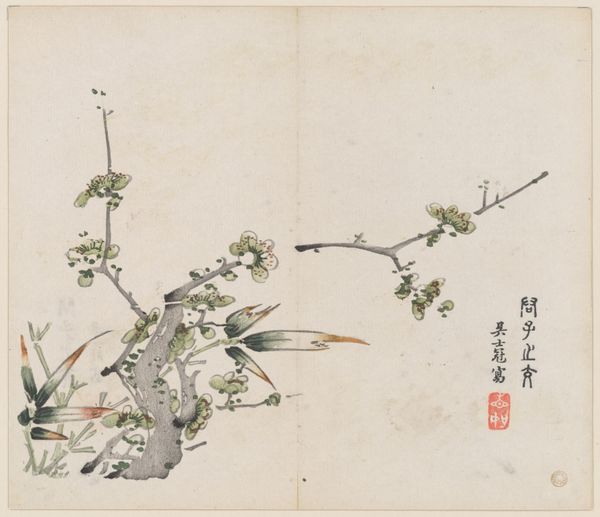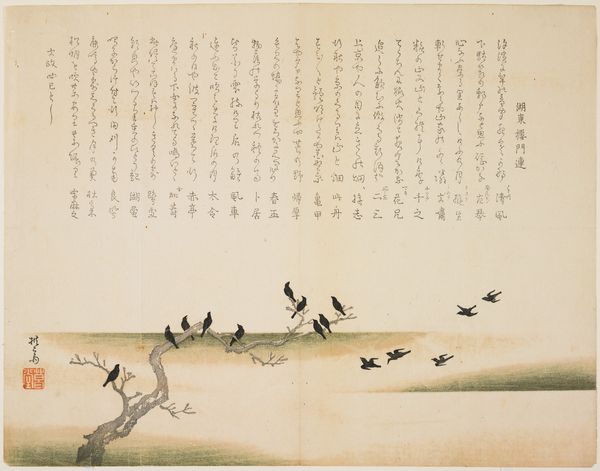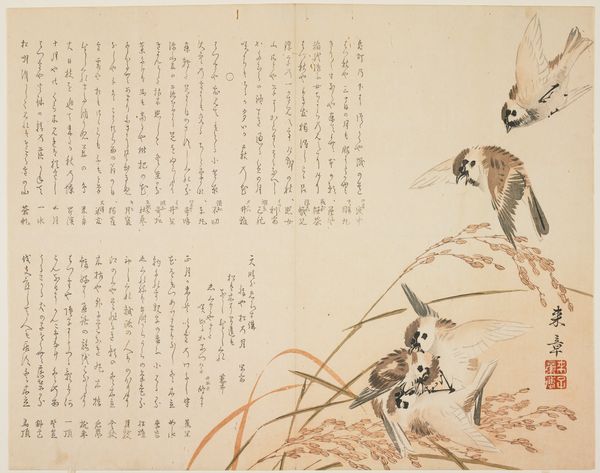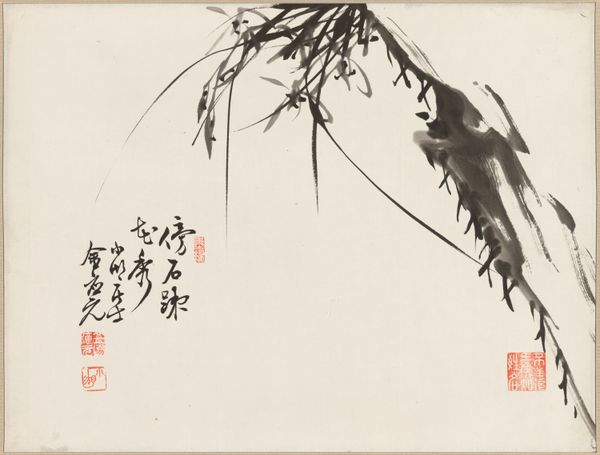
Index Page, prints .151-.200 (Vol.2), from the series "Pictures of No Performances (Nogaku Zue)" 1898
0:00
0:00
Dimensions: Approx. 25.2 × 37.4 cm (10 × 14 4/3 in.)
Copyright: Public Domain
Editor: This is "Index Page, prints .151-.200 (Vol.2), from the series 'Pictures of No Performances (Nogaku Zue)'" created in 1898 by Tsukioka Kōgyo. It’s a woodblock print in ink, and the composition with the cranes and Mount Fuji gives it such a peaceful feeling. What strikes you most about the visual structure of this piece? Curator: It is the compositional arrangement which arrests my gaze. Notice the division of space; the upper section featuring the soaring crane and the ethereal mountain contrasted against the density of the pine and the verticality of the script. The balance, though asymmetrical, offers a rigorous structure. Do you observe how the line of the mountain almost visually connects the two birds, uniting the composition? Editor: I do see that now! The mountain acts as a subtle bridge. And the calligraphy, although I can’t read it, provides a visual texture that complements the pine needles. It adds depth. Curator: Precisely. Consider the use of empty space too, known as ‘ma’ in Japanese aesthetics. How does the emptiness contribute to the overall feeling, or to the articulation of form? Editor: It emphasizes the subjects, makes them more powerful. It almost gives them room to breathe on the page. Curator: Yes, and note the variation in line quality - the assured, delicate strokes of the cranes, juxtaposed with the more textured, varied lines delineating the pine. The very materiality of the print contributes significantly. The paper itself serves as an active element, influencing how we read the forms presented to us. Editor: I hadn’t considered how the material itself adds to the message. I am looking at this so differently now, thank you. Curator: My pleasure. Art lies in noticing these relationships between material, line, form, and space; in constructing our own meaningful interpretation through visual analysis.
Comments
No comments
Be the first to comment and join the conversation on the ultimate creative platform.
